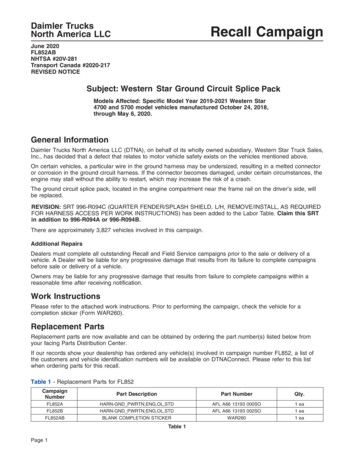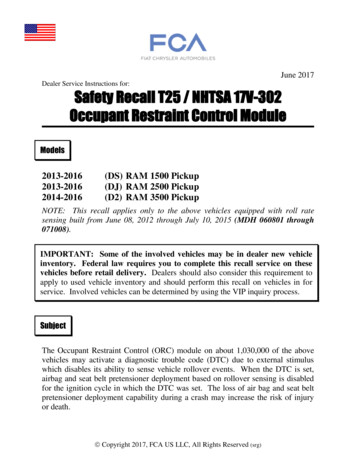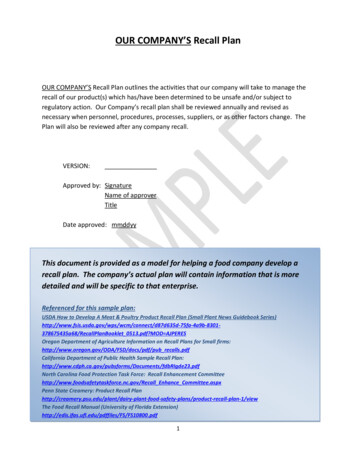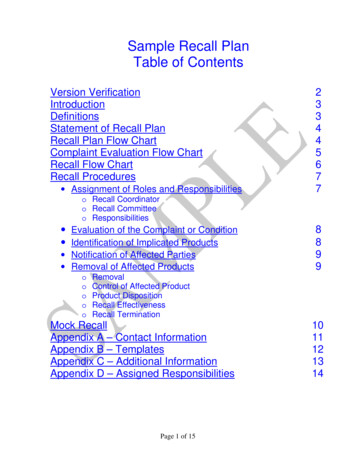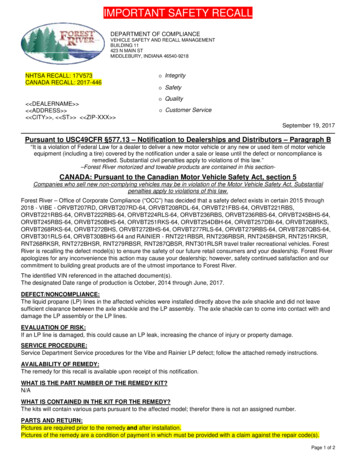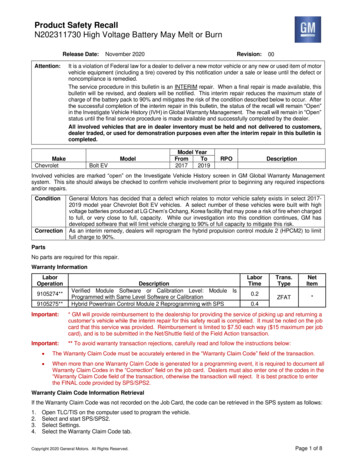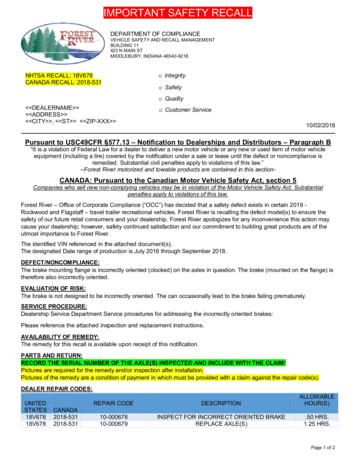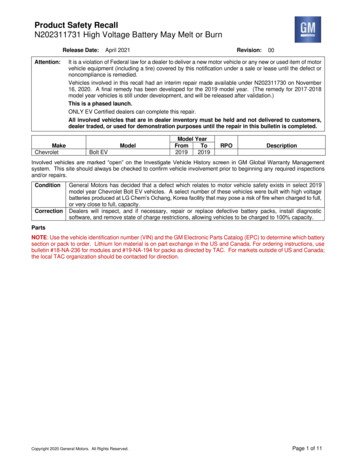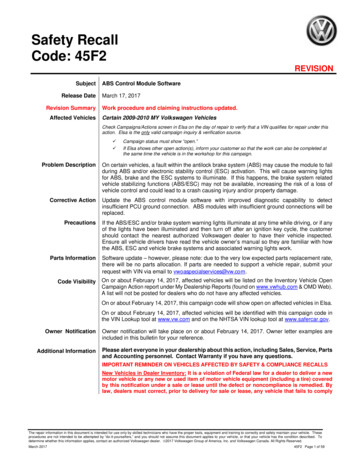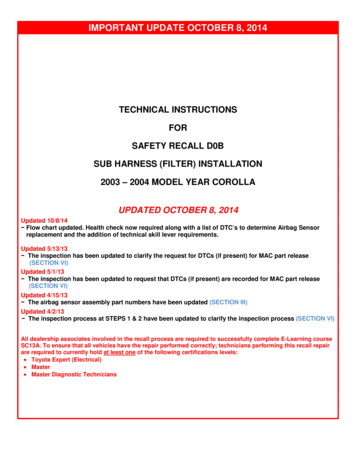
Transcription
Samsung Recall SupportNote7 InvestigationRoot Cause AnalysisKevin White, PhDPrincipal Scientist23 January 2017
2Background and Project Scope After reports of failures in the field, Exponentwas retained as an independent third-party toinvestigate the root cause for thermal failuresof Note7 lithium-ion battery cells A suite of destructive and non-destructivetechniques was used to evaluate the fieldfailure and exemplar cells from bothmanufacturers that provided cells to Samsung In addition to analysis of the cells, an analysisof the design of the battery, device andelectronics was conducted
3
4Root Cause: Manufacturer A Based on the results of analysis and testing, the most likelyroot cause for the thermal failure of certain Manufacturer Acells was determined to be unintended damage to thenegative electrode windings consistently in the corner of thecell closest to the negative tab– The unintended damage was present in all of the cells examined bySamsung and Exponent– The damage was caused by a cell pouch design that providedinadequate volume to accommodate the electrode assembly– The observed damage provides multiple potential routes to internalcell faulting and thermal failure with normal cycling, includingcompromise of the separator and lithium platingManufacturer A Exponent’s initial analysis of cells from Manufacturer Bshowed no deficiencies in the pouch, design ormanufacturing– Manufacturer B cells manufactured after our initial investigation wascomplete were shown to contain a distinctly different defect that wasnot present in the initial cells we investigatedManufacturer B
5
6Root Cause: Manufacturer BPositive Tab Based on the results of analysis andtesting, the most likely root cause for thethermal failure of Manufacturer B cellswas determined to be internal cell faultingbetween positive electrode tab weldingdefects and the copper foil of the negativeelectrode directly opposite the defectivewelds–Welding defects in some incident cells werefound to be tall enough to bridge the distanceto the negative electrode foil–Some cells examined were assembledwithout protective tape over the positiveelectrode tab, increasing the likelihood of aninternal cell faultNegative ElectrodeOpposite Positive Tab
7 Poorly controlled welding of the positive tab in Manufacturer B cells creates sharp,relatively tall welding defect features Normal swelling and contraction of the electrodes during charge and discharge forcesthe weld defect features into the opposing negative electrode Short circuit between the weld defect feature on the positive tab and the copper of thenegative electrode results in heating of the cell At high states of charge, the cellheating results in thermal runaway.
8Battery System Analysis Analysis of the Note7 battery system design indicated that the system is designed with multiple levels ofprotection for the Li-ion cell The testing and analysis performed did not identify a fault in the Note7 battery system that could havetriggered the observed battery failures in the field Testing performed with several third party wireless charging pads available for use with the Note7 deviceshowed that the Note7 device is designed to prevent a failure of these charging pads from causing the Li-ioncell to operate outside its specificationsNote7 Battery System ArchitectureTravelAdapterWirelessCharging PadCharge CurrentNote7Discharge CurrentTravelAdapterBattery PackBatteryProtection CircuitLithium-ionCell
5. Root Cause: Manufacturer B. Based on the results of analysis and testing, the most likely root cause for the thermal failure of Manufacturer B cells was determined to be internal cell faulting between positive electrode tab welding defects and the copper foil of the negative electrode directly opposite the defective welds. –Welding defects in .
